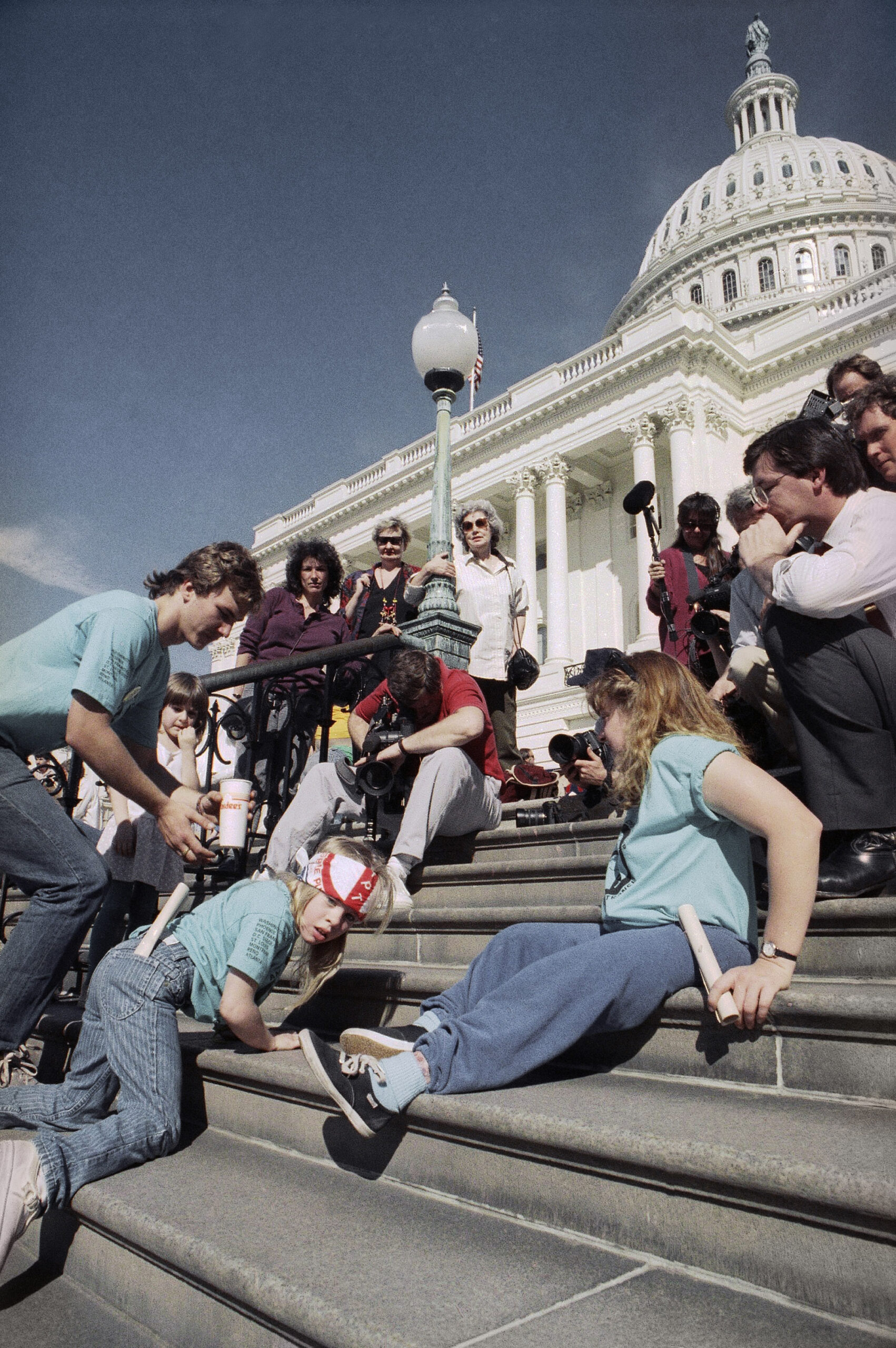Background
By the late 1980s, activists had successfully built momentum for the creation of federal legislation protecting the rights of individuals with disabilities. The proposed law was the Americans with Disabilities Act (ADA), a groundbreaking piece of legislation that prohibited discrimination based on disability.
Over one thousand disability rights activists organized to support the passage of the ADA in Washington, D.C., on March 12, 1990. The protestors started at the White House, then marched to the U.S. Capitol. With the law stalled in Congress, a group of sixty activists decided to make their way up the steps of the Capitol—without wheelchairs or crutches. The protest became known as the “Capitol Crawl.”
The march successfully pressured Congress to pass the bill. President George H. W. Bush signed the ADA into law on July 26, 1990. The law required (and continues to require) public spaces to be accessible to all and for employers to provide reasonable accommodations for employees with disabilities. It led to the inclusion of features like signs in braille, closed-captioning on television, wheelchair ramps, and automatic doors. In schools, children with physical disabilities were no longer segregated in separate classrooms.
About the Document
This photograph shows Jennifer Keelan participating in the Capitol Crawl. Jennifer was born in 1981 with cerebral palsy. She attended her first protest in support of rights for people with disabilities when she was only six years old, and she was first arrested during a peaceful protest at the age of seven. Even at this young age, she experienced discrimination. She joined other activists for dinner after a protest for disability rights and the restaurant refused them service because of their visible disabilities.
Jennifer was eight years old when she climbed the stairs of the Capitol Building. Other activists were hesitant about letting a young girl participate, but she insisted. She felt empowered to represent all children with disabilities. This photograph became an iconic depiction of the fight for disability rights.
Vocabulary
- braille: A printing system for people who are blind or have low vision.
- cerebral palsy: A permanent health condition that makes the limbs and muscles very weak. It is caused by damage to a baby’s brain before or during birth.
- disability: Any mental or physical condition that makes it more difficult for someone to do certain activities or interact with the world around them.
Discussion Questions
- What did (and does) the Americans with Disabilities Act do for people with disabilities?
- How did disability rights activists pressure Congress to pass the Americans with Disabilities Act?
- Why do you think the photograph of Jennifer Keelan became a famous symbol for the disability rights movement?
- What does the story of Jennifer Keelan say about the role of children in activist movements?
Suggested Activities
- AP Government Connections: 3.11: Government responses to social movements
- Lead a close analysis of the photograph and ask students to imagine what Jennifer Keelan might have been feeling or thinking as she was crawling up the Capitol steps.
- Consider the impact of Jennifer Keelan’s activism on students’ lives today. As a class, create a list of accessible features required by the ADA they can see in their classroom, school, and communities.
- Learn more about Jennifer Keelan by reading the children’s book All the Way to the Top: How One Girl’s Fight for Americans with Disabilities Changed Everything.
- Pair this resource with the life story of Lois Curtis to consider the efforts of disability rights activists.
- Explore activism around physical health and disabilities by combining this resource with materials by Latina environmental activists, a speech about the effects of the nuclear disaster at Three Mile Island, lesbians fighting AIDS, and the life story of Byllye Avery. For a larger lesson on women and activism during this period, teach this life story alongside photographs of anti-LGBTQ+ activism, materials by Latina environmental activists, a speech about the effects of the nuclear disaster at Three Mile Island, Take Back the Night, and the life stories of Audre Lorde, Byllye Avery, Yuri Kochiyama, and Patricia Locke.
Themes
ACTIVISM AND SOCIAL CHANGE







